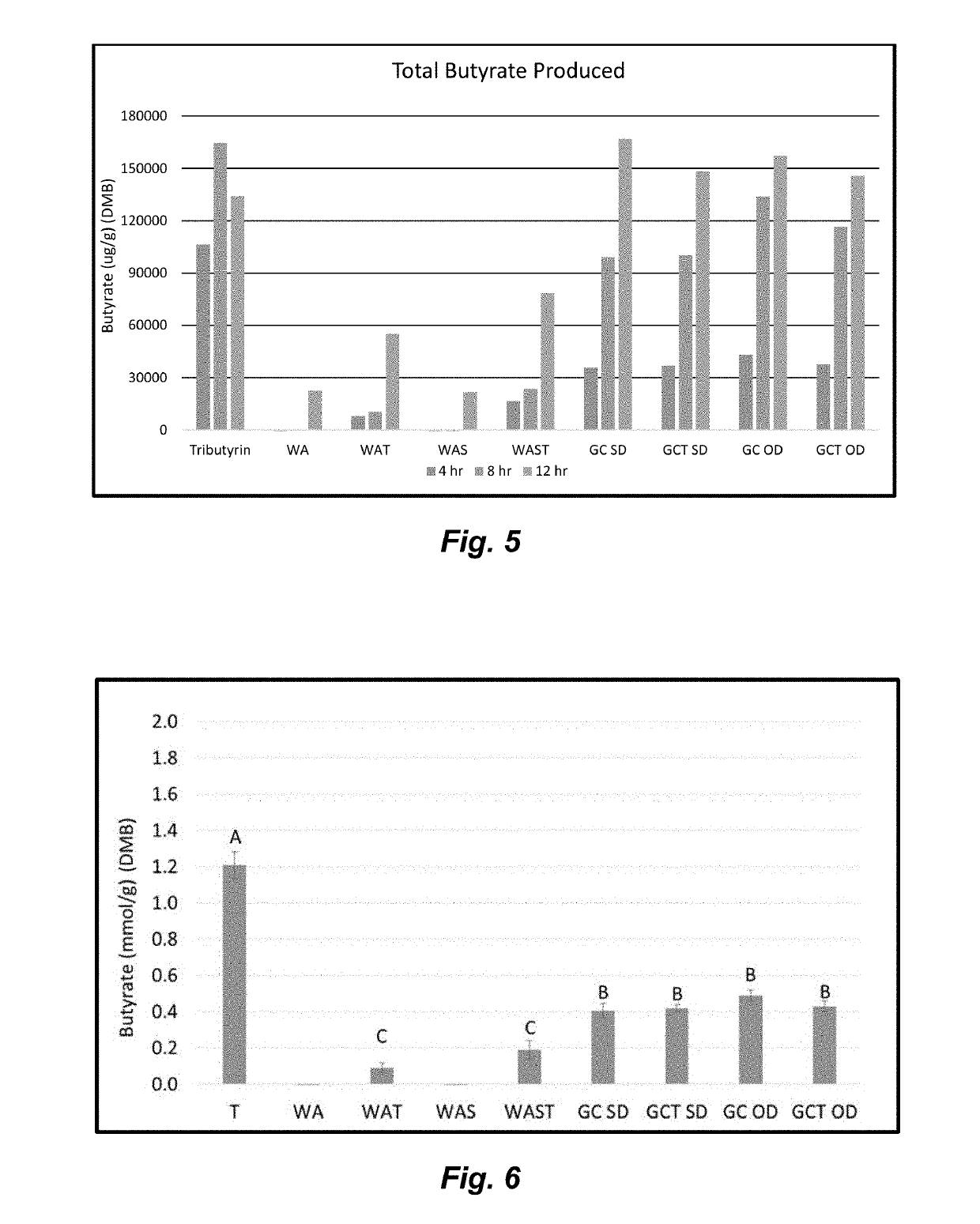Inclusion complexes and methods for making the same
a technology applied in the field of inclusion complexes and methods for making the same, can solve the problems of food as a functional ingredient posing a challenge, tributyrin is associated with negative sensory qualities, and medical research has not yet determined what causes inflammatory bowel diseas
- Summary
- Abstract
- Description
- Claims
- Application Information
AI Technical Summary
Benefits of technology
Problems solved by technology
Method used
Image
Examples
example 1
Tibutyrin Retention of GCT OD vs. GCT SD
[0140]Cyclodextrins were investigated as encapsulated wall materials utilizing two preparation methods: spray drying and oven drying. Spray drying is a commonly used method of processing in the food industry to cost effectively convert liquid formulations into powdered products (Gharsallaoui A, et. al., supra). Oven drying is a method commonly used in the food industry to dry food products using circulated heat in an enclosed space. As shown in Table 1, spray drying and oven drying yielded markedly different retention results. Spray drying only retained roughly 62% of the tributyrin included into the formulation, however, the same formulation when oven dried retained roughly 85% of the tributyrin. The poor performance of the spray drying may have less to do with the ability of cyclodextrins to encapsulate tributyrin, and rather, more to do with the particular formulation (e.g., solids content, viscosity, etc.) and / or conditions (e.g., drying t...
example 2
R-Index Ranking of GCT OD vs. GCT SD
[0141]While retention percentages were acceptable for oven dried cyclodextrins, the ultimate goal of this research mainly involved the reduction of the poor sensory qualities associated with tributyrin. For this reason spray dried and oven dried cyclodextrin microencapsulated tributyrin were included in a sensory difference test. The test used was the R-Index by ranking method to determine if the inclusion of the mentioned microencapsulated particles affected the sensory perception of an infant formula. The panel that ranked the samples included 33 total males and females recruited from the University of Illinois campus. In this test, panelists were presented with a sample labeled as a “noise”, which served as a control and did not contain any microencapsulates or free tributyrin. It is the infant formula as prepared according to instructions on the label, packaging or insert of the product. The panelists are presented with a coded sample and aske...
example 3
Cyclodextrin Preparation
[0146]In order to produce microencapsulated tributyrin by oven drying using gamma-cyclodextrin, the following procedure may be implemented.
[0147]Gamma-cyclodextrin was mixed with water at about a 50% solids content and high-shear mixed for about 1 minute at about 8,000 RPM. Tributyrin at a molar ratio of about 3 moles of cyclodextrin to about 1 mole of tributyrin was added and mixed for about 20 minutes at about 8,000 RPM. This mixture was allowed to sit at about room temperature for a total of about 26 hours. At about 6 hours into this process, the mixture was agitated briefly to re-suspend a two-phase mixture which may have begun to form. From this point on, the mixture was not agitated until the end of the total of about 26 hours. After about 26 hours, the two-phase mixture of cyclodextrin sediment and water layer of water was removed to provide a slurry. This slurry was then centrifuged for about 15 minutes at about 3000 RPM to remove the remaining water....
PUM
 Login to View More
Login to View More Abstract
Description
Claims
Application Information
 Login to View More
Login to View More - R&D
- Intellectual Property
- Life Sciences
- Materials
- Tech Scout
- Unparalleled Data Quality
- Higher Quality Content
- 60% Fewer Hallucinations
Browse by: Latest US Patents, China's latest patents, Technical Efficacy Thesaurus, Application Domain, Technology Topic, Popular Technical Reports.
© 2025 PatSnap. All rights reserved.Legal|Privacy policy|Modern Slavery Act Transparency Statement|Sitemap|About US| Contact US: help@patsnap.com



